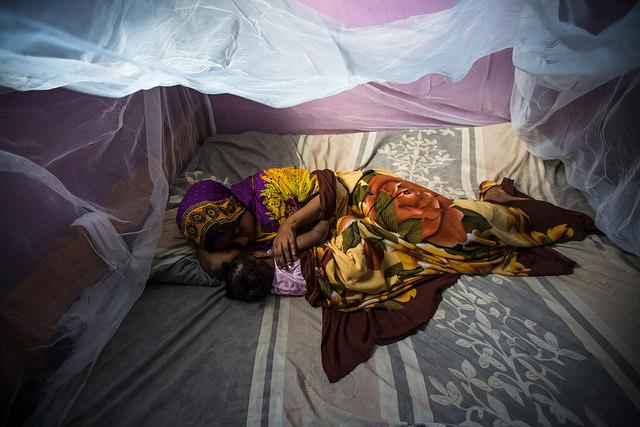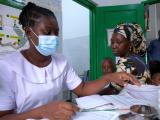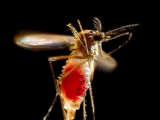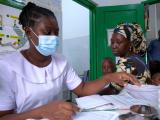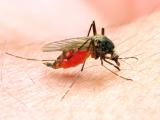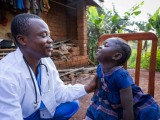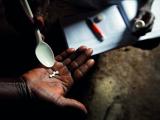For the second year in a row in its annual report on malaria, the World Health Organization (WHO) today said progress against the disease has stalled, but unlike last year, the WHO paired the update with an aggressive plan to step up action in the hardest-hit countries.
In a report that covers 2017, the WHO estimates there were 219 million cases, up from 217 million in 2016. In previous years, malaria cases had been steadily dropping, from 239 million cases in 2010 to 214 million in 2015.
Tedros Adhanom Ghebreyesus, PhD, the WHO's director-general, said in a statement, "Nobody should die from malaria. But the world faces a new reality: as progress stagnates, we are at risk of squandering years of toil, investment, and success in reducing the number of people suffering from the disease."
Losing ground in Africa as funding levels off
Last year, about 70% of malaria cases and deaths were concentrated in 11 countries, according to the WHO's analysis. Ten are in Africa (Burkina Faso, Cameroon, Democratic Republic of the Congo, Ghana, Mali, Mozambique, Niger, Nigeria, Uganda, and Tanzania), and the other is India.
However, the 10 African nations had 3.5 million more malaria infections than in 2016, while India showed progress in reducing its disease burden.
When researchers looked at possible reasons for the increase in vulnerable countries, they found major coverage gaps in use of insecticide-treated bed nets and other tools for preventing the mosquito-borne disease. Though bed net distribution and use has slightly increased in recent years, the WHO estimated that for 2017, half of Africa's at-risk populations did not sleep under a treated bed net.
They also found that fewer homes in the region were protected by indoor residual spraying and that use of therapies for protecting pregnant women and children from malaria was still too low.
Another problem the analysists found was that funding for the global response has leveled off. For 2017, there was $3.1 billion for malaria control and elimination programs, 28% of it from the governments of malaria-endemic countries. The report said the United States was still the single largest international donor, contributing $1.2 billion (39%) toward malaria efforts in 2017.
To meet 2030 global malaria targets, at least $6.6 billion annually by 2020 is needed, which the WHO said is more than double the amount currently available.
Glimmers of progress elsewhere
Alongside worries about malaria in high-burden countries, the WHO reported promising signs in others. For example, more countries are nearing malaria elimination. There were 46 in 2017, compared with 37 in 2010.
China and El Salvador, two malaria-endemic countries, reported no local transmission in 2017, which the WHO said is proof that intensive country-led efforts can cut the risk for their populations.
This year, the WHO certified Paraguay as malaria-free, the first Americas country to achieve the status in 45 years. The WHO said three other countries have requested WHO malaria-free certification: Algeria, Argentina, and Uzbekistan.
Elsewhere, India reported a 24% reduction in cases for 2017 compared with the previous year. Other nations reporting declines in cases last year included Rwanda, Ethiopia, and Pakistan.
Matshidiso Moeti, MD, the WHO's regional director for Africa, said in the statement, "When countries prioritize action on malaria, we see the results in lives saved and cases reduced."
WHO and partners scale up response plans
Alongside today's report, the WHO and the RBM Partnership to End Malaria—with support from global partners—outlined new steps to resume progress against the disease.
The "High Burden to High Impact" response has four key parts, according to the WHO and the RBM Partnership:
- Strengthen country leadership and increase domestic financing,
- Rely on best and shared data that shift efforts from a "one-size-fits-all" approach,
- Empower countries with better guidance, policies, and strategies, and
- Improve the effectiveness of partner support through coordinated country response
In a statement today from the RBM Partnership, Board Chair Winnie Mpanju-Shumbusho, MD, MPH, said the report calls for a decisive response, owned and led by the most affected countries with support from global partners.
"The actions we take now are essential to increasing funding, identifying greater efficiencies and tailoring the optimal mix of tools to get malaria efforts back on track," she added.
See also:
Nov 19 WHO press release
Nov 19 WHO world malaria report
Nov 19 RBM Partnership statement
